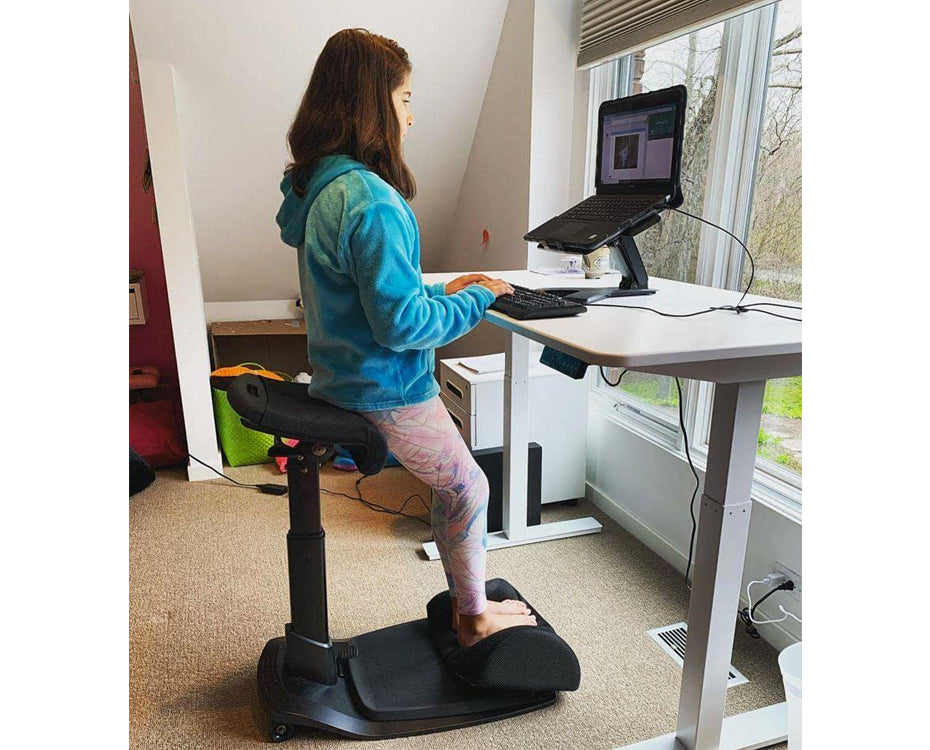Dealing with a bad back can be a significant hindrance, especially if you spend a lot of time working at a desk. The wrong desk setup can exacerbate pain and lead to long-term issues, while the right one can help alleviate discomfort and promote better posture. Here’s a guide to choosing the best desks for managing a bad back.
Key Features to Look For

- Adjustability:
- Height-Adjustable Desks: These desks allow you to alternate between sitting and standing, which can reduce the strain on your back. Look for desks that can easily switch heights to accommodate different tasks and ergonomic positions.
- Tilt Adjustment: Some desks offer a tilting surface which can help maintain proper posture by keeping your screen at eye level and your hands at a comfortable typing angle.
- Ergonomics:
- Proper Desk Height: The desk height should allow your arms to rest comfortably at a 90-degree angle when typing. Adjustable legs or risers can help achieve the correct height.
- Keyboard Tray: An ergonomic keyboard tray can help keep your wrists straight and reduce strain on your shoulders and back.
- Stability and Space:
- Sturdy Construction: A stable desk prevents wobbling and desks for bad back allows you to work without distraction or discomfort.
- Ample Workspace: Ensure the desk has enough surface area to accommodate your computer, accessories, and any other work materials without cluttering.
- Comfort Enhancements:
- Anti-Fatigue Mats: If you opt for a standing desk, consider an anti-fatigue mat to reduce pressure on your feet and back.
- Footrest: A footrest can help maintain proper leg positioning and reduce lower back strain when sitting.
Top Desk Recommendations
- Uplift V2 Standing Desk: The Uplift V2 is a top-rated adjustable standing desk known for its stability and ease of use. It offers a wide range of height adjustments and a programmable keypad to quickly switch between sitting and standing positions.
- Jarvis Bamboo Standing Desk: This desk is both environmentally friendly and highly functional. The Jarvis desk offers a smooth transition between heights and a sturdy frame. The bamboo surface adds a touch of natural aesthetics while being durable.
- VariDesk Pro Plus 36: The VariDesk Pro Plus is a great option for those who need a desktop converter rather than a full standing desk. It sits on top of your existing desk and provides adjustable height settings for both your monitor and keyboard.
- FlexiSpot M2B Standing Desk Converter: Similar to the VariDesk, the FlexiSpot M2B offers a flexible solution for converting a regular desk into a standing one. It features a spacious keyboard tray and a stable lift system.
- Ergotron WorkFit-T: The Ergotron WorkFit-T is another desk converter that provides ergonomic benefits without needing to replace your current desk. It offers easy height adjustments and a solid work surface.
Tips for Maintaining a Healthy Back While Working
- Regular Breaks: Take frequent breaks to stretch and move around. This helps prevent stiffness and reduces back pain.
- Proper Posture: Keep your back straight, shoulders relaxed, and feet flat on the floor. Adjust your chair and desk to support this posture.
- Exercise: Incorporate exercises that strengthen your back and core muscles. Strong muscles support your spine and reduce the risk of back problems.
- Ergonomic Chair: Pair your desk with an ergonomic chair that provides proper lumbar support and encourages good posture.
Choosing the right desk can make a significant difference in managing back pain and improving your overall comfort while working. By investing in a desk that supports ergonomic principles and encourages movement, you can create a healthier and more productive work environment.
